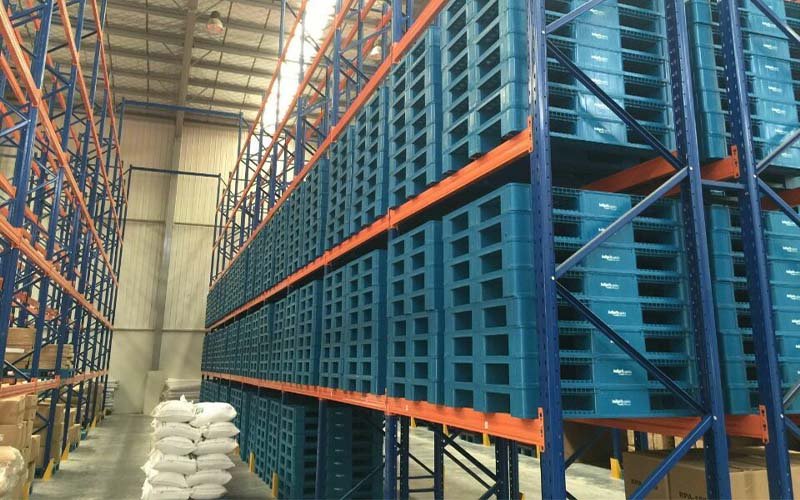
Are Plastic Pallets the Future of Sustainable Logistics?
As sustainability becomes a top priority in logistics, plastic pallets are emerging as a game-changing solution. More durable, hygienic, and eco-friendly than traditional wood pallets, plastic pallets offer significant advantages for businesses looking to optimize their supply chains. This article explores whether plastic pallets truly represent the future of sustainable logistics and how they can benefit your operations.
Why Plastic Pallets Outperform Traditional Wood Pallets
Plastic pallets have gained traction in industries ranging from pharmaceuticals to food and beverage due to their superior durability and hygiene. Unlike wooden pallets, which can splinter, harbor bacteria, or degrade over time, plastic pallets are resistant to moisture, chemicals, and pests. They comply with international standards like ISPM 15, eliminating the need for heat treatment or fumigation. For businesses prioritizing efficiency, plastic pallets are also lighter, reducing transportation costs, and often designed for seamless integration with automated warehouse systems. A study by the European Pallet Association revealed that plastic pallets can last up to 10 times longer than their wooden counterparts, making them a cost-effective long-term investment.
Environmental Impact: A Circular Economy Perspective
Sustainability isn’t just about durability—it’s about lifecycle management. Plastic pallets are typically made from recycled materials (e.g., HDPE or PP) and are fully recyclable at the end of their lifespan. Unlike Wooden Pallets Stackable Long Epal Wood Pallet Making Wood Chip Pallet Wooden pallets & boxes, which often end up in landfills, plastic pallets contribute to a circular economy. Companies like CHEP and iGPS have pioneered closed-loop systems where damaged pallets are collected, reprocessed, and remanufactured. According to the U.S. Environmental Protection Agency, this approach reduces carbon emissions by up to 30% compared to single-use wood pallets. For decision-makers, this aligns with ESG (Environmental, Social, and Governance) goals and enhances brand reputation.
Cost Analysis: Upfront Investment vs. Long-Term Savings
While plastic pallets may have a higher initial cost (ranging from $50 to $200 per unit versus $15–$60 for wood), their ROI becomes evident over time. Consider these factors: reduced replacement frequency, lower repair costs (wooden pallets require nails and splinter repairs), and minimized product damage due to their uniform design. A logistics manager at a Fortune 500 company reported a 40% reduction in pallet-related operational downtime after switching to plastic. Additionally, plastic pallets are often stackable, optimizing storage space—a critical advantage for warehouses with high-density inventory.
Industry-Specific Applications and Case Studies
In the pharmaceutical sector, plastic pallets meet FDA and EU GMP standards for cleanliness, preventing contamination risks. For cold chain logistics, their moisture resistance ensures product integrity. A notable example is Nestlé, which transitioned to plastic pallets in its frozen food division, cutting sanitation costs by 25%. Meanwhile, automotive manufacturers favor plastic pallets for their ability to withstand heavy loads (up to 2,500 kg dynamic capacity) without warping. Contract negotiators should note that reusable plastic pallets often come with tracking capabilities (RFID or barcodes), enhancing supply chain visibility.
FAQ: Addressing Common Concerns
Future Trends: Smart Pallets and Automation
The next frontier involves IoT-enabled plastic pallets with sensors for real-time monitoring of location, temperature, and shock impacts. Companies like Amazon and DHL are piloting these "smart pallets" to reduce loss and spoilage. As automation grows, the compatibility of plastic pallets with robotic systems (e.g., AGVs) will further drive adoption. Industry analysts project the global plastic pallet market to exceed $10 billion by 2027, fueled by e-commerce expansion and stricter sustainability regulations.
Ready to future-proof your logistics? Explore our range of high-performance plastic pallets or contact our team for a customized cost-benefit analysis tailored to your operations.
Related Posts
- Top 5 Benefits of Using Plastic Turnover Boxes in Your Business
- Purpose of wooden pallets
- The Hidden Costs of Not Using Plastic Turnover Boxes
- How to Choose the Best Plastic Turnover Boxes for Your Needs
- Are Plastic Pallets the Future of Sustainable Logistics?
- 5 Game-Changing Benefits of Plastic Pallets for Your Business
Products
Message
Leave a message
Have any questions or requests? Please leave a message and we will get back to you as soon as possible.

